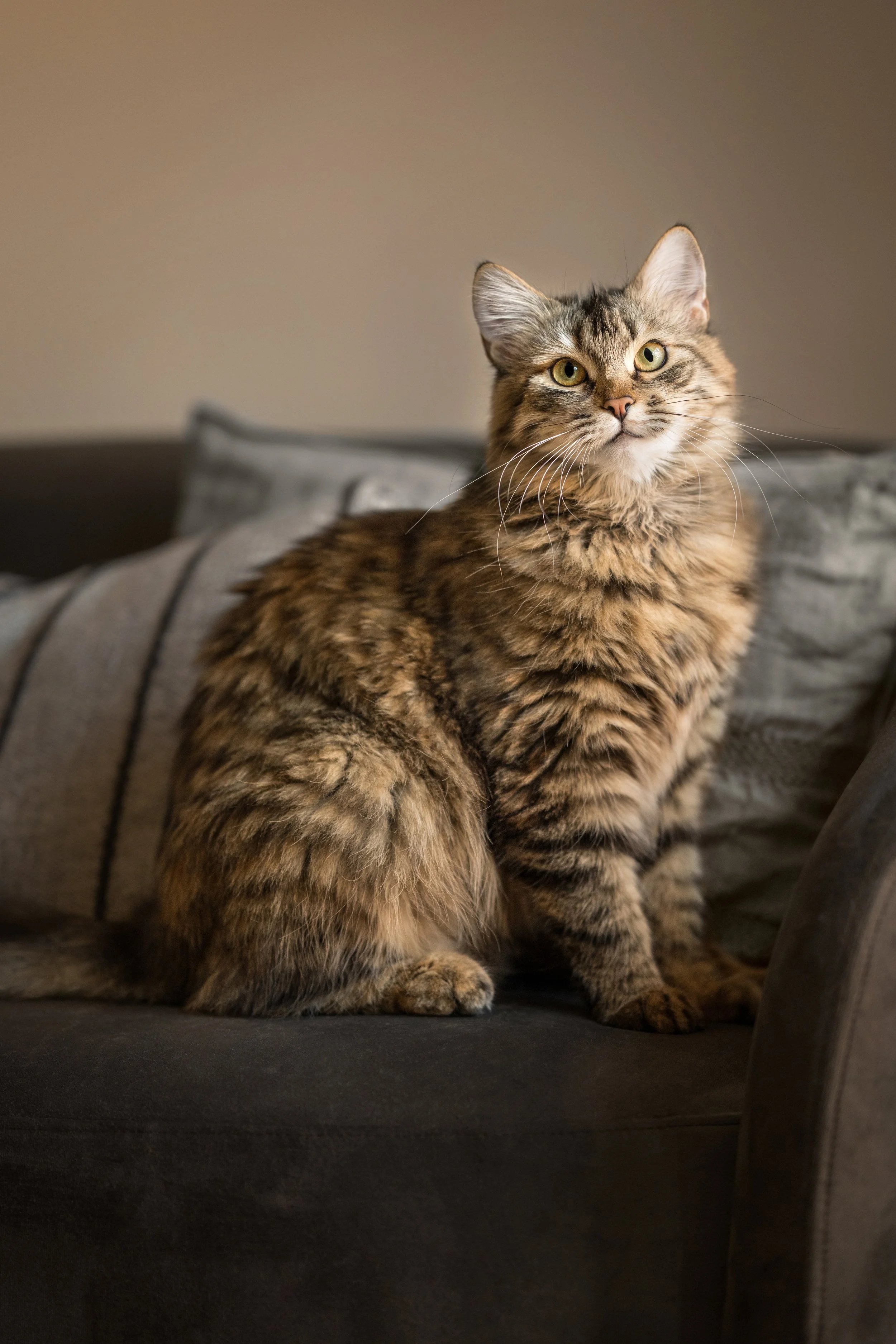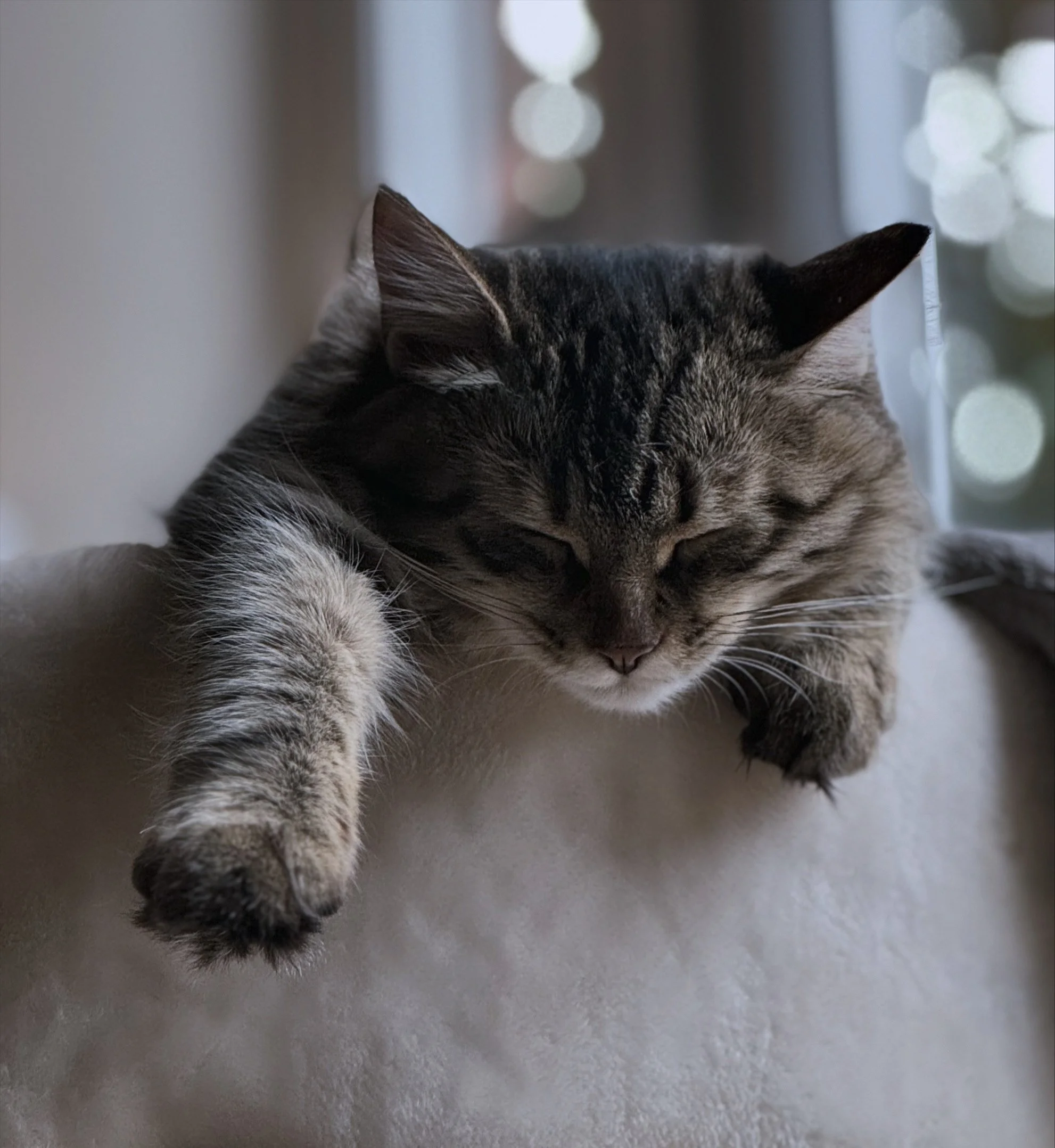Laboratory Testing for Fel d1
In some cases, we can arrange laboratory testing of a kitten’s saliva to assess its individual Fel d1 levels. This is useful for families with allergy concerns, but is a more expensive option. Here’s how it works:
The test can be arranged instead of a reservation fee when kitten reservations open but is typically only carried out from 12 weeks of age when fel d1 levels begin to stablise.
It takes up to three weeks for test results to come back.
The cost is currently around £590, paid by the buyer.
The fee is non-refundable, even if the kitten is found to be unsuitable.
For most households, the T-shirt test offers a more accessible and practical first step. However, if you’re seriously considering a Siberian we’re happy to talk through all available options.
If the test results are favourable and you decide to proceed, the full standard kitten price (currently £1800) will still apply, in addition to the cost of testing.
Please be aware that even with a low fel d1 cat it may still be necessary to utilise air filters, hoover regularly, wash bedding frequently, keep litter trays in a separate area, and keep on top of hygiene. Neutering has also been shown to reduce fel d1. Here is a useful website for further reading - https://www.siberianresearch.com/cat-allergies/
Are Siberian Cats Hypoallergenic? Understanding Allergy-Friendly Companions
Siberians are known to produce lower levels of the Fel d1 protein, the primary cause of cat allergies. While no cat is truly hypoallergenic, many people with sensitivities find they can live comfortably with a Siberian.
Roughly half of Siberians have lower allergen levels than other breeds. Around 15% of Siberians have allergen levels that are low enough to place in homes with severe or life threatening allergic reactions. In these cases, where allergies are particularly sensitive, it may be wise to consider Fel d1 testing (more on that further down the page).
If you or someone in your household is an allergy sufferer wondering whether a Siberian cat might be suitable, in the first instance, we recommend a simple T-shirt test and fur sample to assess individual tolerance.
The T-Shirt Test
here’s how it works:
You send us a clean T-shirt
We expose it to the dander and saliva of our cats.
We return it to you by post, along with a separate fur sample.
The allergic individual wears the shirt for a few hours and monitors for any reaction.
If no reaction is observed it can then be useful to press the fur sample directly onto the face.
It’s best to test the sample 1-3 times each day, gently washing your face between each trial or testing on different days. This will help determine if you might experience any allergic reactions.
Although there is no better test than living with the cat, this method tends to give clearer results than spending a short time in a home with a cat, which can be misleading, particularly if the cat doesn’t want to spend much time on a strangers knee and/or there are other pets in the house. If you don’t react negatively to the T-shirt test, there’s a good chance you’ll tolerate living with a Siberian cat comfortably.
Additional Support for Allergy-Sensitive Homes
We understand how important it is to be confident that a kitten will be a good fit, especially in households with known cat allergies.
If you’ve completed the T-shirt test and gone on to reserve a kitten, we can offer an individual sitting with your chosen kitten. This allows you to spend time together in a quiet, calm environment and gain extra reassurance before bringing your kitten home.
These sittings are only available to families who have:
A cat allergy
Completed the T-shirt test without a reaction
Reserved a kitten
This process helps ensure that allergy-sensitive homes have every opportunity to feel confident in their match, while still protecting the health and wellbeing of our kittens.
Allergy Sufferers FAQs
-
Fel d 1 is the first allergen identified in domestic cats, the name stands for Felis domesticus allergen number 1. It’s a protein that can cause allergic reactions in humans. It remains the most significant allergen, accounting for the majority of cat-related allergic reactions. Scientists have now identified over a dozen cat allergens, but Fel d 1 is by far the most potent and widely studied. Siberians naturally produce less of it than most other breeds.
-
Not necessarily. While the breed is known for lower average levels of Fel d1, individual cats can vary. Some lines may produce less than others, and factors like sex, age, and whether the cat is neutered can also affect allergen levels. This is why a personal test, like our T-shirt method, can be so useful.
-
There’s no such thing as an allergen-free cat, but many people with mild to moderate cat allergies find they can live with Siberians comfortably.
-
It gives a much more realistic sense of exposure than brief visits. Many families have used it to make informed decisions.


